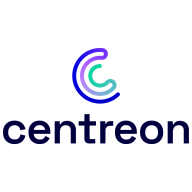

Nagios XI and Centreon both compete in the network monitoring solutions category. Centreon's ease of monitoring and data visualization capabilities give it an advantage in flexibility and comprehensive monitoring experience.
Features: Nagios XI offers extensive plugin support allowing for customization and integration, user-friendly configuration and installation, and dashboard customization with multiple server structure support. Centreon excels in monitoring multiple data centers from a single dashboard, offers flexibility, and seamless data visualization integrating various systems into one interface.
Room for Improvement: Nagios XI requires plugins for extra functionalities, lacks clustering, and involves complexity in installation depending on the Linux distribution and configuration interface. It also lacks APIs for host/service management and its web interface needs modernization. Centreon needs to improve cloud service monitoring, API capabilities, and automate its poller features. Users want a more responsive UI and dynamic reporting functionalities.
Ease of Deployment and Customer Service: Nagios XI primarily uses an on-premises model and handles diverse deployment environments. Users encounter mixed experiences with customer service due to time zone-related support delays, often relying on community resources. Centreon also supports multiple environments and is praised for user-friendly deployment. Users find its customer service responsive, though they note integration improvements could enhance support systems.
Pricing and ROI: Nagios XI offers a free open-source version for basic monitoring and expensive enterprise options, with pricing reflecting considerable value in resource-saving environments. Centreon provides an open-source option with paid modules for advanced features, seen as cost-effective for large installations requiring complex integrations. Users value Centreon's comprehensive monitoring solutions though suggest licensing models could be more flexible.
Centreon provides timesaving and costsaving benefits as it lets us manage multiple devices on a single platform.
It significantly saves time by automating monitoring tasks and reduces costs as it requires fewer resources.
We do not have direct access to Centreon's technical support.
If issues arise, like services appearing as down in Centreon, technical support helps check the polar-server communication.
Technical support from Centreon responds within 24 hours and resolves issues quickly.
Occasionally, for several hours, we do not receive any alerts, causing a business impact.
We use other tools for adding and deploying configured devices, but direct access from Centreon would be beneficial.
If the user interface isn’t presenting data well, it becomes difficult to manage when scaling.
Centreon is a much more straightforward and stable tool compared to Icinga.
Sometimes we do not receive alerts, causing business impact, and users ask why no alerts were received.
It is very stable.
Enhancements are needed in identifying configuration issues, providing real-time alerts in case of issues, and improving the HTTP configuration tasks.
Reliability is sometimes an issue. Centreon has a developer mode and production mode, but sometimes alerts don't come through in production mode.
While Centreon excels at server-level monitoring, it lacks the ability to track web app availability and latency, unlike Dynatrace, which is efficient in this area.
Many tools have poor user interfaces, making them hard to manage and navigate.
The GUI could be improved. It's a bit too basic.
Centreon's pricing is not very expensive.
We are using the free, open-source version.
The pricing for the Nagios XI product is good and better than other solutions.
Monitoring is a fundamental pillar of technical support, and Centreon streamlines this process, reducing the need for extensive manual checks.
Centreon's real-time monitoring, despite having some manual aspects, supports us in managing our operations effectively.
Centreon allows us to monitor all of our devices on one platform.
Nagios XI simplifies our setup and reduces the time spent configuring monitoring tools.
The alerting system is very effective.
| Product | Market Share (%) |
|---|---|
| Centreon | 2.6% |
| Nagios XI | 3.5% |
| Other | 93.9% |


| Company Size | Count |
|---|---|
| Small Business | 11 |
| Midsize Enterprise | 5 |
| Large Enterprise | 14 |
| Company Size | Count |
|---|---|
| Small Business | 22 |
| Midsize Enterprise | 17 |
| Large Enterprise | 21 |
Centreon is an all-in-one IT monitoring solution that is a network, system, applicative supervision, and monitoring tool. It is free and open source, and one of the most flexible and powerful monitoring softwares on the market.
Centreon Features
Centreon has many valuable key features. Some of the most useful ones include:
Centreon Benefits
There are several benefits to implementing Centreon. Some of the biggest advantages the solution offers include:
Reviews from Real Users
Below are some reviews and helpful feedback written by Centreon users.
PeerSpot user Thor M., CEO at a tech services company, says, "The single-pane view provides us a view of all of our network infrastructure, and it is one of the most important tools that we use to see the status of our customers' networks. It provides a nice benefit when it comes to helping align IT operations with business objectives. The top-down views, dashboards, and business context reporting are things that are nice to have because you want to be able to show the customer that everything is working, that problems have been addressed, and that you're providing value.”
Thomas C., Managing Director, Canada at Eva, comments, “The most valuable feature of the solution is the flexibility, the ability to integrate all kinds of equipment. As long as something has an IP you can monitor it. What we try to achieve all the time is not only saying a company's system is available, but to give additional data on the performance of the equipment. So the flexibility is what matters the most to us, where we can script everything. Centreon has a lot of Plugin Packs, meaning they support, by design, a lot of devices. And on top of that, we have the ability to add our own scripts and do whatever we want and display the data as we want in the central dashboards.”
Marcilio L., President at ITS Solucoes, expresses, "The dashboards are valuable because they ease troubleshooting and viewing. It becomes easier to locate the source of a problem... The dashboards make it easier to communicate with our clients. They don't want to see the alert console, they want to see a beautiful dashboard representing their network and their business and to watch it in case something is wrong in their environment."
Florent Q., Network Engineer at a computer software company, mentions, "The most valuable feature is that we can manually configure everything we need. After it comes inside the interface of Centreon, you can display it. Because the interface is quite user-friendly, you can manually configure the configuration very deeply, which is very pleasant and useful because you can monitor and see everything on your service list, dashboard, or MAP. The most useful feature for me is that you can create your own plugin and monitoring query."
Nagios XI provides monitoring of all mission-critical infrastructure components, including applications, services, operating systems, network protocols, systems metrics, and network infrastructure. Third-party add-ons provide tools for monitoring virtually all in-house and external applications, services, and systems.
Nagios XI uses a powerful Core 4 monitoring engine that provides users with the highest levels of server monitoring performance. This high degree of performance enables nearly limitless scalability and monitoring powers.
With Nagios XI, stakeholders can check up on their infrastructure status using the role-based web interface. Sophisticated dashboards enable access to monitoring information and third-party data. Administrators can easily set up permissions so users can only access the infrastructure they are authorized to view.
Nagios XI Benefits and Features
Some of the benefits and top features of using Nagios XI include:
Reviews from Real Users
Nagios XI stands out among its competitors for a number of reasons. Several major ones are its integration options and monitoring abilities, as well as its alerting features.
David P., a senior DevOps engineer at EML Payments Ltd, writes, “We use Nagios as a network discovery tool. We use Nagios to maintain our uptime statistics and to monitor our services. It has allowed us to be much more sophisticated in our monitoring and alerting.”
An IT-OSS manager at a comms service provider notes, “Nagios XI has a custom API feature, and we can expose custom APIs for our integration. This is a great feature.”
We monitor all IT Infrastructure Monitoring reviews to prevent fraudulent reviews and keep review quality high. We do not post reviews by company employees or direct competitors. We validate each review for authenticity via cross-reference with LinkedIn, and personal follow-up with the reviewer when necessary.